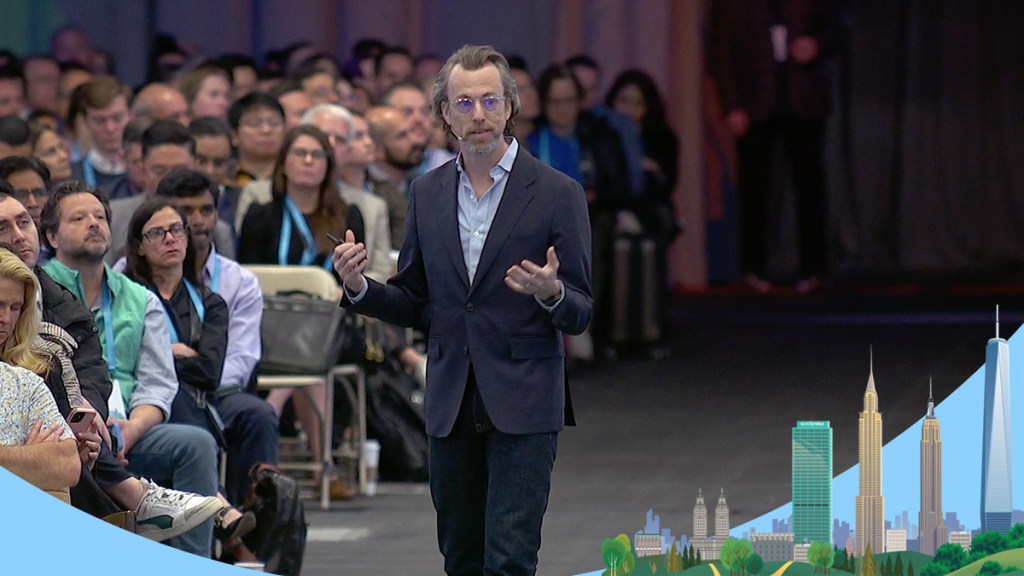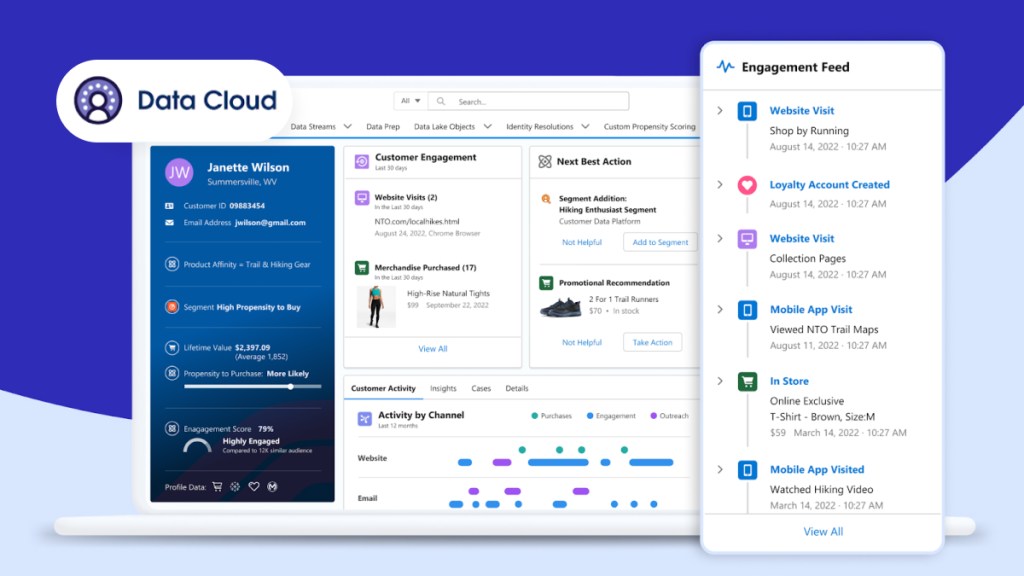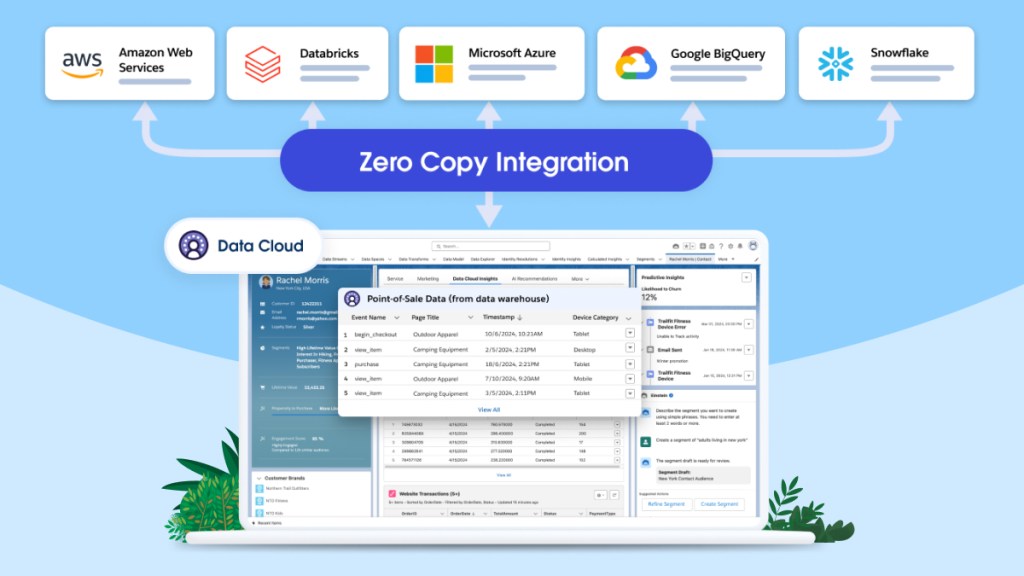Why Data, Trust, and Contextual UX Are the Real AI Gold




Adam Evans, SVP Product, Salesforce AI Platform
Editor’s note: This article was updated on January 30, 2025, to reflect the latest information on how data powers generative AI and Agentforce.
Artificial intelligence is the most promising technological disruption of our lifetimes, and will significantly affect every aspect of business operations, from sales and service to marketing, finance, legal, and human resources. Yet, even with global corporate investment in AI set to hit $200 billion in 2025, many company leaders admit they lack clarity on how to get from pilot to full production and value realization.
While three-quarters of workers surveyed in the “Your Data, Your AI” survey from Salesforce believe accurate, complete, and secure data is critical to building trust in AI, more than half do not trust the data used to train AI systems today. And nearly 60% of AI users worldwide find it difficult to get what they want out of AI, the report found.
But there’s good news. Working with businesses who are deploying Agentforce, our digital labor platform for enterprises, we’ve learned there are three ingredients needed for AI success: a data foundation, an AI trust layer, and delivering AI in the flow of work through a contextual UX. With these capabilities, companies across industries and geographies, like AAA, ADP, Turtle Bay, and the Adecco Group are unlocking enterprise deployments at scale and driving measurable outcomes from AI automation, personalization, and performance optimization, including higher sales productivity, faster customer service resolutions, higher-conversion marketing campaigns, and more.
Great AI depends on great data
First, for AI to live up to the hype, generate high-quality results and deliver tangible business value, you need a strong data foundation. Large language models (LLMs) must be grounded in trusted enterprise data, including customer data, IoT and telemetry data, emails, and PDFs. Unfortunately, most company data today remains trapped in disconnected silos – various cloud and on-premise applications, databases, data warehouses, and data lakes — making wholesale digital transformation and value realization elusive. Even worse, the data being used by many organizations to ground AI models is often incomplete, incorrect, or irrelevant — leading to inconsistent results.
That’s why Salesforce developed Data Cloud, the hyperscale data engine that brings together structured and unstructured data from any source and harmonizes it to create unified customer profiles. Data Cloud eliminates data silos, creating a single platform for accessing and using all of a business’ enterprise data. It easily integrates both structured and unstructured data into Salesforce with a library of connectors, utilizing zero-copy integrations to securely connect data lakes, including Snowflake, Redshift, BigQuery, and Databricks. Data Cloud then cleanses, harmonizes, and preps the data for use by your employees, analytics, and autonomous AI agents.
Data Cloud unlocks the power of your trapped data for better analysis, decision-making, and AI automation, grounding customer and business data and metadata — the common language that integrates all Salesforce applications — in ways that deliver trusted, outcome-oriented results without expensive model training.
For example, real-time data that a prospective customer has just visited your website or downloaded your mobile app might live in a data warehouse such as Snowflake. In the past, your sales reps would have no way of knowing this without manually pulling the data or creating a custom report, and if this happened at all, it certainly would not occur in real time. With Data Cloud, this real-time data in Snowflake is seamlessly ingested into Data Cloud, where it can trigger a flow to notify the salesperson to reach out in a timely manner.
Unified data powers generative AI agents with context, automating tasks and delivering real-time, agentic AI experiences. And with the right data infrastructure, a variety of LLMs can be used to power next-gen customer experiences.
Just like oxygen for us, what breathes life into AI is the data and metadata that describes the data to the model. The future’s fortune is in our data. Data is the new gold. – Marc Benioff, Chair and CEO
“Just like oxygen for us, what breathes life into AI is the data and metadata that describes the data to the model. The future’s fortune is in our data. Data is the new gold,” said Marc Benioff, Chair and CEO of Salesforce.
Trust is table stakes for enterprise AI
Trust is a key component of successful enterprise AI deployments. We have engineered trust into every Salesforce application through our Einstein Trust Layer. The Einstein Trust Layer includes data masking to ensure data privacy protection, a zero-retention architecture to ensure data is never used for training by AI models or stored outside Salesforce, and an LLM audit trail. We have also built in a feedback loop that continuously improves model accuracy and relevance, and this feedback data is automatically logged in Data Cloud.
AI in the flow of work is key to enterprise adoption
The final ingredient for success is delivering AI in the flow of where your sales, service, marketing, commerce, developer, and other employees work, rather than asking them to swivel to yet another disconnected system and screen.
Unlike copilots that lack the specific customer data and context to generate useful responses, Agentforce provides a single conversational interface. This enables users to automate a broad variety of tasks and workflows, such as generating customer campaigns, handling customer service cases, answering questions, creating and summarizing content, and so much more — all in the flow of work. Agentforce also operates securely within the confines of a company’s data and business processes.
A great example of putting trusted data to work in the travel and hospitality sector is the luxury vacation destination Turtle Bay Resort. Previously, its existing booking system for island excursions was an island of trapped data, and wasn’t sophisticated enough to segment guests based on detailed preferences and past interactions.
So, they turned to Salesforce’s Data Cloud to seamlessly harmonize this data to enrich their guest profiles. With Data Cloud, the resort pulls together guest data — like preferences, booking history, and resort interactions — all into one place. Now, Turtle Bay Resort can create targeted guest segments based on all of this data — instantly. Turtle Bay knows guests are seeing relevant excursion recommendations that will make their stay even better. In fact, personalized web content for known users has led to a 40% increase in engagement. Adventurous couples get one set of excursion offers. Curious families get a different set. Everything is personalized, based on consolidated data.
Data Cloud will unify data from across the Adecco Group’s more than 40 disparate systems, providing the data and metadata for Agentforce to produce accurate, trusted output and actions.
Using Salesforce, including Agentforce and Data Cloud, the Adecco Group is scaling its global talent supply chain, filling more open roles faster while providing superior experiences for job seekers. Data Cloud will unify data from across the Adecco Group’s more than 40 disparate systems, providing the data and metadata for Agentforce to produce accurate, trusted output and actions.
With AI, the potential for true enterprise transformation is immense. Those that can put in a foundation of data and trust, and offer AI in the flow of where their employees work, will be able to shift from pilot to production and realize tremendous value, employee satisfaction, customer loyalty, and business growth.
Read more
- Learn more about Agentforce and how Salesforce is using its own agent technology to power help.salesforce.com
- Uncover more insights from Salesforce’s recent Your Data, Your AI survey





















